If we replace character c with x where (x ∈ {a,b}+), say, L2 = {WXWR| x, W ∈ {a,b}+}, then L2 is a regular language.
Yes, L2 is Regular Language :).
You can write regular expression for L2 too.
Language L2 = {WXWR| x, W ∈ {a,b}+} means:
- string should start any string consist of
a and b that is W and end with reverse string WR.
- notice: because W and WR are reverse of each other so string start and end with same symbol (that can be either
a or b)
- And contain any string of
a and b in middle that is X. (because of +, length of X becomes greater than one |X| >= 1)
Example of this kind of strings can be following:
aabababa, as follows:
a ababab a
-- -------- --
w X W^R
or it can be also:
babababb, as follows:
b ababab b
-- -------- --
w X W^R
See length of W is not a constraint in language definition.
so any string WXWR can be assume equals to a(a + b)+a or b(a + b)+b
a (a + b)+ a
--- -------- ---
W X W^R
or
b (a + b)+ b
--- -------- ---
W X W^R
And Regular Expression for this language is: a(a + b)+a + b(a + b)+b
Don't mix WXWR with WCWR, its X with + that makes language regular. Think by including X that is (a + b)* we can have finite choice for W that is a and b (finite is regular).
Language WXWR can be say: if start with a ends with a and if start with b end with b. so correspondingly we need two final states.
- Q6 if
W is a
- Q5 if
W is b
ITs DFA is as given below.

